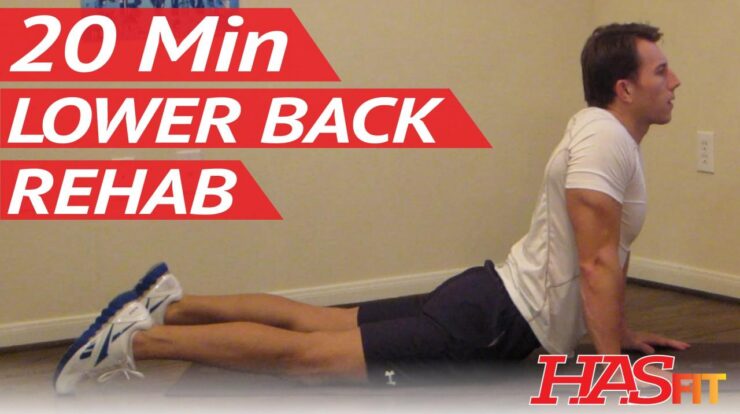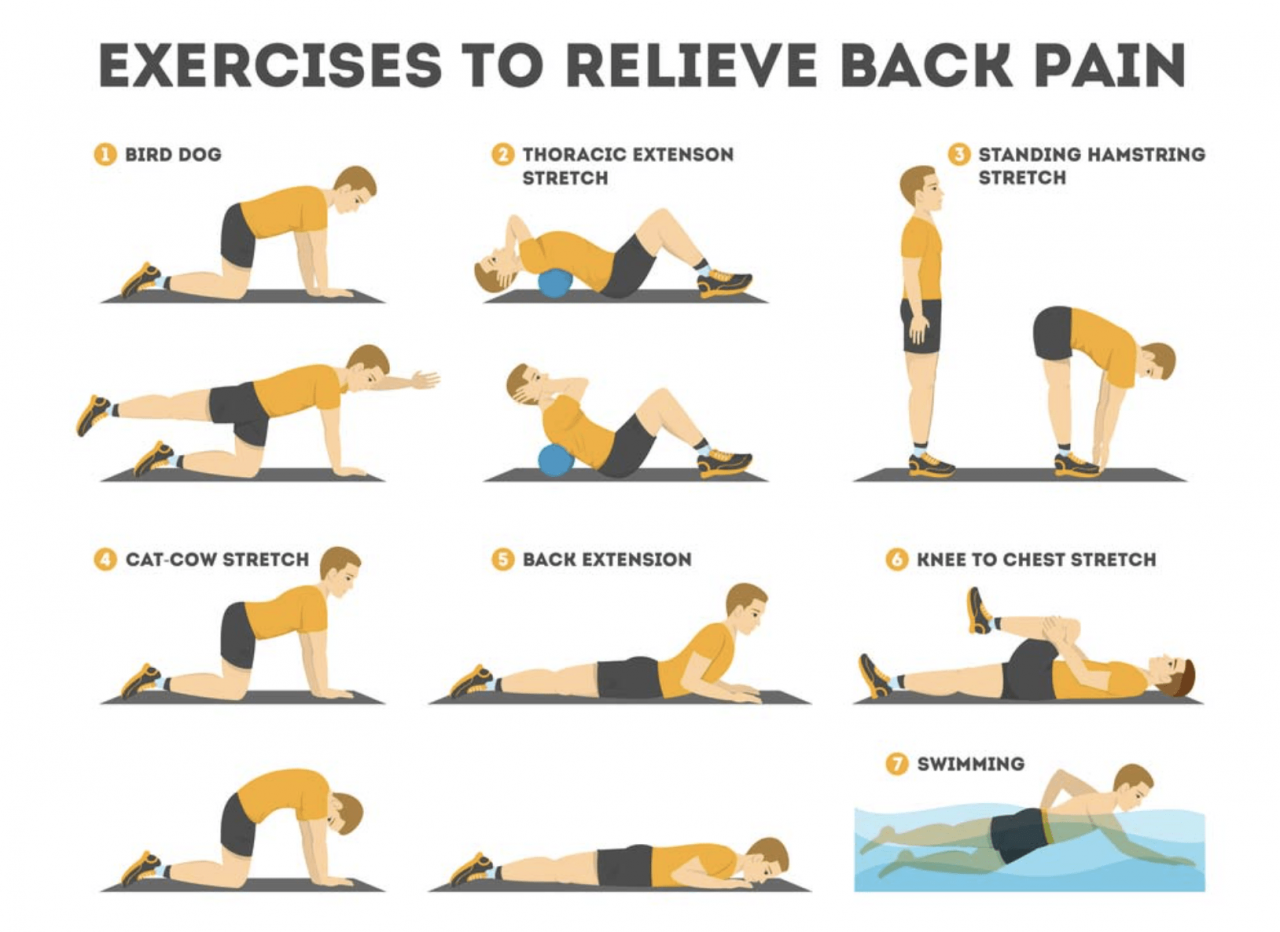
Exercises for lower back fat – Embark on a transformative journey with exercises specifically designed to target and eliminate lower back fat. This comprehensive guide unveils effective techniques, nutritional insights, and lifestyle modifications to sculpt a leaner, more defined physique.
Discover the science behind lower back fat, its various types, and the prevalence that affects countless individuals. Dive into a tailored exercise regimen that includes detailed instructions, repetitions, sets, and duration for optimal results.
Understanding Lower Back Fat

Lower back fat, also known as love handles or muffin tops, refers to the excess fat that accumulates around the lower back and waistline. This fat is often stubborn and difficult to lose, but it can have a significant impact on overall health and appearance.
Maintaining regular exercise is crucial for preserving flexibility and preventing stiffness in the muscles. Studies have shown that regular exercise helps to increase the range of motion in joints, improve posture, and reduce the risk of injury. By strengthening the muscles around the joints, exercise helps to keep them flexible and mobile.
For instance, engaging in exercises like lower back exercises at home can help to strengthen the back muscles, improving flexibility and reducing the risk of back pain.
There are two main types of lower back fat: subcutaneous fat and visceral fat. Subcutaneous fat is the type of fat that lies just beneath the skin, while visceral fat is the type of fat that surrounds the internal organs.
Both types of fat can contribute to lower back pain and other health problems.
Lower back fat is a common problem, affecting both men and women. According to a study published in the journal Obesity, approximately 60% of adults in the United States have excess abdominal fat, including lower back fat.
Exercises for Lower Back Fat Reduction
There are a number of effective exercises that can help to reduce lower back fat. These exercises target the muscles in the lower back and waistline, helping to burn calories and tone the muscles.
- Plank:Hold a plank position for 30-60 seconds, engaging your core and keeping your back straight.
- Side plank:Hold a side plank position for 30-60 seconds on each side, engaging your core and keeping your hips lifted.
- Russian twist:Sit on the floor with your knees bent and your feet lifted off the ground. Twist your torso from side to side, keeping your core engaged.
- Bicycle crunch:Lie on your back with your hands behind your head. Lift your legs off the ground and bring your knees towards your chest. Then, twist your torso to the side and touch your right elbow to your left knee. Repeat on the other side.
- Mountain climber:Start in a plank position. Bring your right knee towards your chest, then return it to the starting position. Repeat with your left knee.
Diet and Lifestyle Modifications, Exercises for lower back fat
In addition to exercise, diet and lifestyle modifications can also help to reduce lower back fat. Eating a healthy diet that is low in calories and fat can help to reduce overall body fat, including lower back fat. Eating plenty of fruits, vegetables, and whole grains can help to keep you feeling full and satisfied, while avoiding processed foods, sugary drinks, and excessive amounts of alcohol can help to reduce calorie intake.
In addition to diet, lifestyle changes such as getting regular exercise, getting enough sleep, and managing stress can also help to reduce lower back fat. Exercise helps to burn calories and tone muscles, while sleep and stress management can help to reduce cortisol levels, which can lead to weight gain.
Additional Considerations
There are a number of other factors that can contribute to lower back fat, including hormonal imbalances and medical conditions. If you are struggling to lose lower back fat, it is important to talk to your doctor to rule out any underlying medical conditions.
In some cases, surgery may be an option for removing lower back fat. However, surgery is only recommended for people who have a significant amount of lower back fat and who have not been able to lose weight through diet and exercise.
As we age, it’s crucial to prioritize flexibility to maintain our physical well-being. Regular exercise plays a pivotal role in preventing flexibility issues. According to experts at the Lincoln County Medical Center, “Regular exercise helps keep joints flexible and muscles strong, reducing the risk of stiffness and pain.”
Moreover, it promotes the production of synovial fluid, which lubricates joints and enhances their range of motion. Additionally, strengthening the back muscles through targeted exercises like lower back exercises at home can significantly improve flexibility and reduce the likelihood of back pain and injuries.
Success Stories and Case Studies
There are many success stories of people who have successfully reduced lower back fat. One such story is that of Sarah, a 35-year-old woman who lost 50 pounds and 10 inches from her waistline in just six months. Sarah followed a healthy diet and exercise plan, and she also made some lifestyle changes, such as getting more sleep and managing her stress levels.
Another success story is that of John, a 40-year-old man who lost 30 pounds and 6 inches from his waistline in just three months. John followed a similar diet and exercise plan as Sarah, but he also added some strength training exercises to his routine.
Outcome Summary: Exercises For Lower Back Fat

Achieving a lower back free of excess fat is within reach. By incorporating these exercises into your fitness routine, adopting mindful eating habits, and addressing underlying factors, you can unlock a transformed physique. Embrace the power of knowledge and consistency to unveil a leaner, more confident you.
FAQ Overview
What causes lower back fat?
Lower back fat can be attributed to various factors, including hormonal imbalances, sedentary lifestyle, poor posture, and genetics.
How long does it take to see results from these exercises?
Results may vary depending on individual factors. However, with consistency and proper form, noticeable improvements can be observed within a few weeks.
Can I do these exercises at home?
Yes, most of these exercises can be performed at home with minimal equipment. Ensure you have adequate space and maintain proper form.